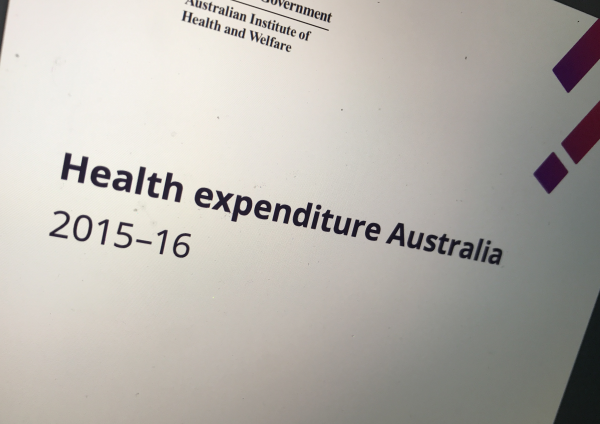Private health insurers' share of total health spending has grown over the past decade, and it is accelerating, according to a new report from the Australian Institute of Health and Welfare.
The report, Health expenditure Australia 2015–16, finds spending by Australia's private health insurers rose over six per cent compared to the previous year, to $14.9 billion.
This was up from just $6.6 billion ten years ago. The sector increased its share of total health spending over the decade, including all government and non-government sources, from 7.6 per cent to 8.8 per cent.
Growth in outlays by private health insurers has grown at an average annual rate of 5.8 per cent over the past decade, in line with the average annual premium increase.
The report calculates spending by private health insurers by subtracting the private health insurance rebate from total benefits paid.
"The introduction of income testing has had the effect of reducing the subsidies paid by the Australian Government on private health insurance premiums without an equivalent reduction in benefits paid," says the report.
Growth in spending by insurers - benefit outlays minus the rebates - accelerated in recent years (average annual rate of 6.4 per cent since 2010-11) as a result of changes to the rebate.
According to the report, "Since the introduction of income testing of the premium rebate in July 2012, the share of gross benefits contributed by the private health insurance funds has grown from 66.0% to 72.2%."
Spending by insurers per person covered averaged $1,318 in 2015-16, up 3.6 per cent on the year before, with an annual average of 3.2 per cent over the past decade.
Private health insurers paid over $8.5 billion to hospitals, representing 57 per cent of outlays, with $7.4 billion going to private hospitals.
